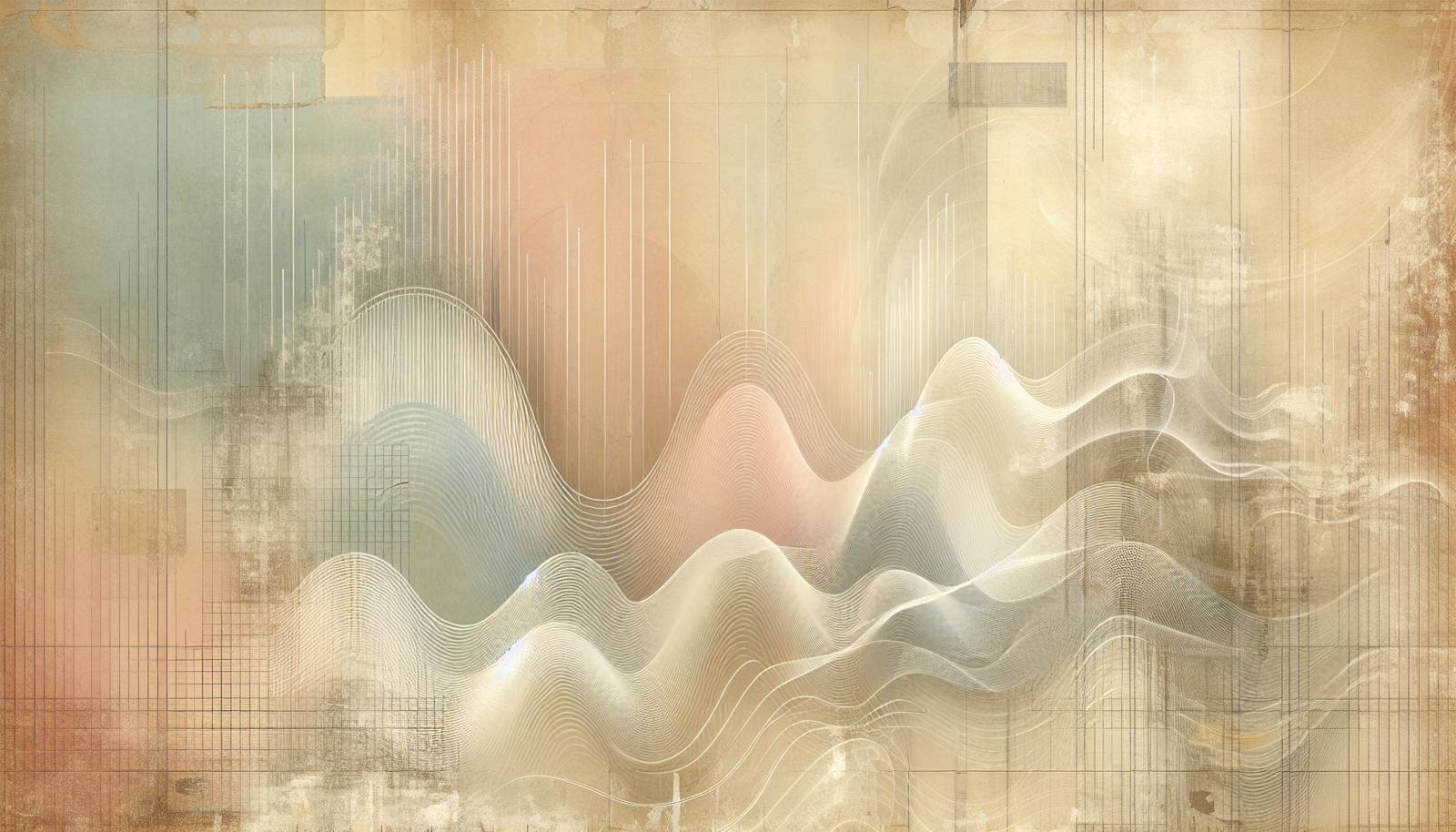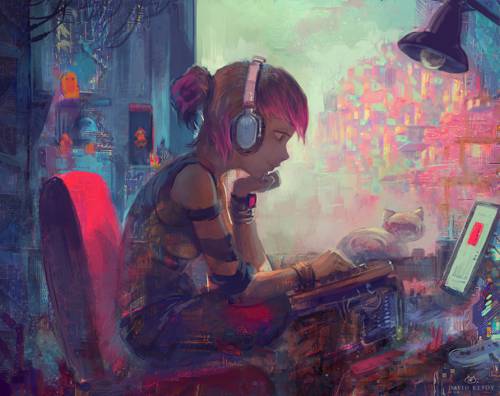
FAQ About The Evolution of Lo-fi Music in Digital Platforms

What is lo-fi music?
Lo-fi music, short for 'low-fidelity', is a genre that emphasizes a raw and unpolished sound, often incorporating imperfections that would typically be considered flaws. This includes background noise, audio distortion, and a homemade aesthetic that resonates with audiences. It is characterized by its calming, nostalgic qualities and often combines elements from different genres such as hip-hop, jazz, and ambient music.

How did lo-fi music originate?
Lo-fi music's origins can be traced back to the DIY ethic of 1960s and 70s rock bands that recorded music in garages and basements. The term 'lo-fi' gained prominence in the 1990s with the rise of artists who embraced lower-quality recordings as an artistic choice. However, the genre in its current form has been heavily influenced by producers like J Dilla and Nujabes, who integrated techniques from hip-hop and jazz into their work.

Why has lo-fi music become popular on digital platforms?
Lo-fi music has thrived on digital platforms for several reasons. It provides a soothing and unobtrusive background sound that is perfect for studying or relaxing, which appeals to a large audience. Additionally, the algorithms of digital platforms such as YouTube and Spotify have played a crucial role in promoting lo-fi music by recommending it to users based on listening preferences, thus expanding its reach.

What role have streaming services played in the evolution of lo-fi music?
Streaming services have been instrumental in the evolution of lo-fi music by providing a global platform for artists to distribute their music easily and connect with audiences worldwide. Services like Spotify, Apple Music, and YouTube offer curated playlists and auto-generated mixes that expose listeners to new lo-fi tracks, contributing to the genre's growth and diversification.

How do lo-fi music producers typically create their tracks?
Lo-fi music producers often create tracks using digital audio workstations (DAWs) to layer samples, beats, and live instrument recordings. The creative process may involve sampling vinyl records, using software instruments, and applying effects like reverb or tape saturation to create a vintage sound. Producers aim to evoke a relaxed atmosphere often enhanced by elements like rain sounds or subtle ambient noise.

What impact has lo-fi music had on music production?
Lo-fi music has impacted music production by democratizing the process, allowing independent artists to create and release music using affordable equipment and software. It has encouraged experimentation with sound textures and imperfections, leading to the fusion of lo-fi elements into other genres. This genre has inspired new production techniques that prioritize emotional resonance over technical perfection.

Who are some notable artists in the lo-fi music genre?
Notable artists in the lo-fi music genre include J Dilla, known for his pioneering work in hip-hop production; Nujabes, who infused lo-fi with smooth jazz influences; and more contemporary artists like Chillhop and Lofi Girl, who have become popular on streaming platforms. These artists have significantly contributed to the genre's aesthetics and contemporary appeal.

What online communities have formed around lo-fi music?
Online communities centered around lo-fi music have flourished on social media platforms like Reddit, Discord, and YouTube. These communities often share music recommendations, discuss production techniques, and host live streaming events where fans can listen to and chat about lo-fi music together. These spaces have become hubs for collaboration and networking among producers and fans alike.

How has lo-fi music influenced other genres?
Lo-fi music has influenced other genres by introducing elements like atmospheric soundscapes, relaxed tempos, and a focus on emotional storytelling. It has impacted indie rock, ambient, and electronic music, encouraging artists to experiment with raw and imperfect sounds. This cross-genre influence is visible in the growing trend of artists from various genres incorporating lo-fi elements into their work.

Why do people often listen to lo-fi music while studying or working?
Lo-fi music is popular for studying or working due to its calming and repetitive nature, which helps maintain focus and boosts productivity without being distracting. The genre creates an ambiance that is both soothing and engaging, helping listeners to concentrate on tasks while simultaneously reducing stress and anxiety.

Are there any notable lo-fi music events or festivals?
While lo-fi music is not typically associated with large-scale festivals, various online events and streams act as virtual gatherings for fans and artists. For example, platforms like YouTube host live streaming lo-fi sessions, often themed for studying or relaxation. These events provide opportunities for real-time interaction between fans and artists, enhancing the sense of community within the genre.

What characteristics define lo-fi music tracks?
Lo-fi music tracks are defined by their intentional imperfections, including background noise, crackle, and a mellow, nostalgic vibe. They often feature repetitive loops, sampled instrumentation, laid-back beats, and jazz influences. The focus is on simplicity and mood, creating a soundscape that feels intimate and personal.

How has technology influenced the production of lo-fi music?
Technology has greatly influenced the production of lo-fi music by making it accessible and affordable for creators through advanced digital audio workstations (DAWs) and user-friendly production tools. These technologies allow producers to emulate vintage sounds and integrate a variety of samples and effects, enabling both experienced and novice producers to craft lo-fi tracks effectively.

What is the significance of the 'Lofi Girl' in popularizing lo-fi music?
The 'Lofi Girl' is an iconic figure known from the 'lofi hip hop radio - beats to relax/study to' YouTube channel. She has become a symbol of the genre's worldwide appeal by providing a 24/7 stream of lo-fi music, attracting millions of listeners. This continuous exposure has significantly contributed to the genre's popularity and the establishment of its cultural presence online.

What are some popular lo-fi music playlists on streaming platforms?
Popular lo-fi music playlists on streaming platforms include 'lofi hip hop music - beats to relax/study to' on YouTube, 'Lo-Fi Beats' on Spotify, and 'Lo-Fi Sleep/Chill' on Apple Music. These playlists curate a mix of relaxing lo-fi tracks from various artists, making them a favorite choice for listeners seeking background music for studying, work, or relaxation.

How do digital platforms help new lo-fi artists gain recognition?
Digital platforms help new lo-fi artists gain recognition by offering accessibility to a global audience and enabling easy sharing and promotion of their music. Platforms like Spotify, SoundCloud, and YouTube allow artists to publish tracks without traditional label support, often featuring algorithm-driven recommendations that increase the visibility of new music and help artists build a following.

What are the visual aesthetics commonly associated with lo-fi music?
Visual aesthetics commonly associated with lo-fi music often include retro and nostalgic imagery, such as vintage animation, anime clips, or minimalistic and serene environments. These visuals enhance the relaxing and meditative qualities of the music, creating an immersive experience that complements the auditory elements of the genre.

What is the future of lo-fi music on digital platforms?
The future of lo-fi music on digital platforms looks promising with the continuing growth of online communities and streaming services that support independent creators. As digital tools become increasingly sophisticated, even more artists will be able to produce and share lo-fi music, further diversifying the genre and its influence on global music culture.

Are there educational resources for aspiring lo-fi producers?
Yes, there are numerous educational resources for aspiring lo-fi producers, including online tutorials, workshops, and forums. Websites like YouTube offer comprehensive guides on lo-fi production techniques, while platforms like Skillshare and Masterclass provide courses tailored to music production. Online communities also serve as valuable resources for tips, feedback, and collaborative opportunities.

How do lo-fi artists monetize their music on digital platforms?
Lo-fi artists monetize their music on digital platforms through various methods, such as streaming royalties from services like Spotify, Apple Music, and YouTube. Additionally, they may sell music or merch through Bandcamp, participate in sponsored content, or receive support through fan-funding platforms like Patreon. Leveraging multiple income streams can help artists sustain their careers.
